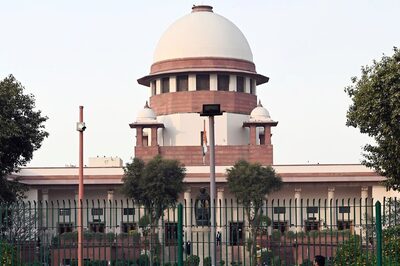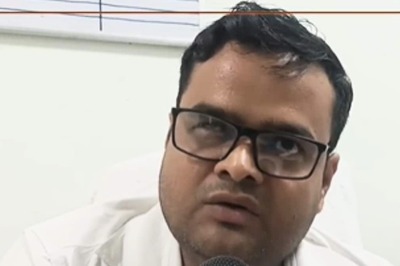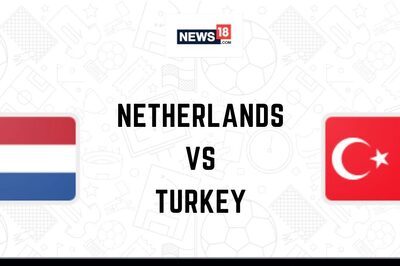
views
India is poor and unequal. Taking cognizance of this ground reality in an election year, both the ruling Bharatiya Janata Party (BJP) and opposition Congress have announced flagship schemes.
While the saffron party has offered 10 per cent reservation for economically weaker sections, commonly known as the ‘EWS quota’, the grand old party has promised to implement the Nyuntam Aay Yojana (NYAY).
The Congress, which included the scheme is its manifesto released on Tuesday, said, “To eliminate abject poverty by 2030, the Congress will introduce NYAY to provide Rs 72,000 a year to the poorest 20% families in India.” In essence, NYAY is a minimum income support programme.
The manifesto specifies that the scheme will be implemented in phases and the associated cost would be less than 1 per cent of the GDP in the first year and less than 2 per cent of the GDP thereafter.
Meanwhile, the Union cabinet approved the 10 per cent reservation in jobs and higher education early in January 2019 in a bid to provide support to the “economically backward” sections of society.
The beneficiaries of the scheme are persons who are not covered under the existing reservations for SCs, STs and other socially and educationally backward classes and whose family has a gross annual income below Rs 8 lakh.
However, both the schemes merit a thorough evaluation as regards their feasibility. And in assessing both the promises in the broader context of welfare spending and tax restructure, the World Inequality Lab (WIL), an organisation that aims to promote research on global inequality dynamics, released a report in March 2019 titled ‘Tackling inequality in India: Is the 2019 election campaign up to the challenge?’
NYAY
Addressing the big question regarding the funding aspect of welfare schemes such as NYAY, Nitin Bharti, a research fellow at WIL, acknowledges that the cost would be high but says there are “various ways” of meeting funding requirements.
In the paper, the authors have focused on “progressive taxation” that can help reduce the level of economic inequality in the country. “Progressive tax” is a tax imposed in accordance with a person’s ability to pay, that is, imposing low rates of tax on low-income earners and vice-versa.
The authors of the paper have analysed the scheme outlined by the Congress where cash distribution would be Rs 72,000 per eligible household. According to them, the scheme would benefit 33 per cent of households in India and the associated cost would be Rs 2, 90,000 crore, i.e., 1.3 per cent of the country’s GDP in 2020.
The authors lay stress on the fact that the cash disbursement should be in addition to the existing welfare schemes, because replacing current schemes with NYAY would have “negative consequences”, as has been evidenced in other countries.
Bharti, however, adds that if there are some schemes that are mired with corruption and are not serving their purpose, they should be re-considered and some of the revenue for welfare schemes, like NYAY, can be drawn from there as well.
In its manifesto, the Congress has stated that NYAY would be a joint scheme between the Centre and states and will be funded “through new revenues and rationalisation of expenditure” and that “merit subsidy schemes” that are currently in place will be continued.
While it remains to be seen what “new revenues” and “rationalisation of expenditure” mean, the authors of the report have made some suggestions as regards funding to tackle poverty and more importantly, inequality, in India. The best way to finance income guarantee schemes, the report notes, is to implement progressive taxes on income and wealth.
“There doesn't exist a wealth tax in India” Bharti explains. Wealth tax in India was scrapped in 2016. And, even though income flow from wealth is taxed under income tax laws, Bharti notes that the total share of such taxes in overall tax is very low. “Hence, we propose a tax on the stock of wealth instead of the flow component,” he adds. “India could devise a new set of progressive wealth tax in India.”
The report outlines the tax structure too saying that household wealth more than Rs 2.5 crore should be taxed at 2 per cent. The impact of such a tax would be on the top 0.1 per cent of households and would yield Rs. 2, 30,000 crore, i.e., 1.1 per cent of the GDP.
It also suggests a complementary way to finance schemes like NYAY— revamped income tax brackets on the highest earners. A tax rate of 50 per cent on those earning more than Rs 50 lakh.
Justifying such a move, Bharti says that taxes in India “stand somewhere in the middle in the world. Highest marginal tax rate can be increased by a few percentage points.” “Top income and wealth tax rates protect democracy from being captured by the wealthiest,” the report states.
Elaborating on the same, Bharti says taxation is a very sensitive topic in any country and hence, it is important that proper debate takes place among all policy makers and citizens. “In the long run, India needs to think seriously about decreasing inequality in the country. There is a need for more redistribution at the macro level. Minimum Income is one way to do that and progressive taxation is a tool towards it.”
EWS Quota
In its current form, the scheme “essentially misses its supposed objective and appears more as a political stunt than a reform genuinely seeking social justice,” the report states. This conclusion has been arrived at after considering that the scheme sets threshold limits that lack focus on the actual deprived classes.
To illustrate, capping the income threshold at 8 Rs lakh, in effect, makes about 93 per cent of the households in India eligible for the scheme and capping ownership limits of agricultural land at 5 acre, makes about 96 per cent of the population eligible.
The authors recommend that the threshold for ownership of agricultural land should be set at 0.4 acre and be combined with a ‘rural area’ criteria to target the bottom half living in rural areas.
Inequality in India
To understand the need for minimum income schemes and quotas for the economically deprived in India, we first need to assess the levels of inequality in India.
The report states that in the late 1930s, the top 1 per cent of earners captured less than 21 per cent of the nation’s total income. In the early 1980s, they held about 6 per cent of total income. Today, the number stands at 22 per cent.
The rise in inequality coincided with the set of deregulation measures that began to be implemented in the 1980s and according to the report, such measures were introduced along with “a strong reduction in tax progressivity and little reinvestment of national income growth in social expenditures.”
Hence, policy decisions like moving away from tax progressivity and making low levels of investment in social welfare schemes are troubling because these are “key to trigger income growth among bottom and middle-income groups of the population”.
And to counter such moves, the authors suggest the introduction of more progressive methods of taxation. The move will also enable the generation of funds for social welfare schemes, effectively hitting two birds — inequality and poverty — with one stone.
However, in the implementation of welfare schemes, there is one important gap in India — the lack of a single updated database that contains information on income and wealth that the government could use to target beneficiaries. And until this is addressed at a governmental level where records of income and ownership is collated, the government would need to rely on self-reported figures that may be open to manipulation.




















Comments
0 comment